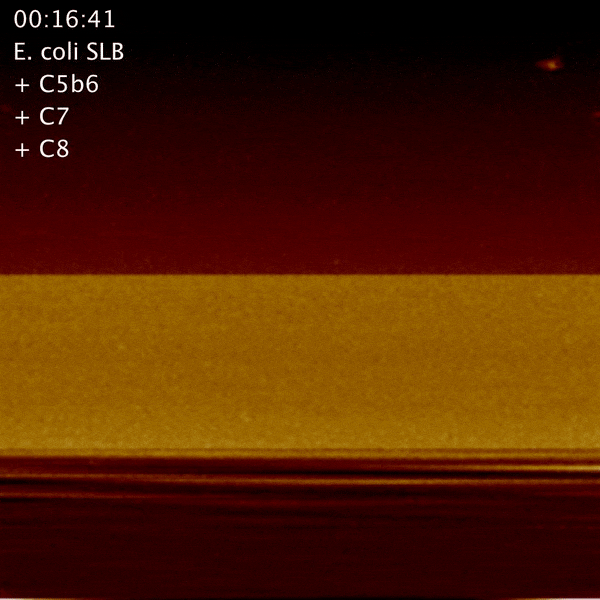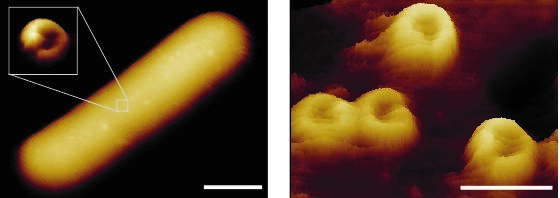First-Ever Video Shows Immune System Blowing Holes in Bacteria

A microscopic video of the human immune system in action reveals how our bodies blow tiny holes in foreign bacteria, while leaving our own cells intact.
The video and study, published yesterday (May 6) in the journal Nature Communications, offers the clearest view yet into the mechanisms of the human immune system attacking bacteria. The video shows holes just 10 nanometers across — as narrow as a single wave of ultraviolet light — forming in a model bacterial cell wall.
To capture the process in action, the researchers rapidly tapped the surface of the lab-made cell wall with an ultrafine needle, which can sense objects on scales that microscopes struggle to image in motion. The technique is called atomic force microscopy. [5 Ways Gut Bacteria Affect Your Health]

The video — filmed in tiny liquid chambers in a laboratory — shows that the immune system attack that kills invading bacteria seems to pass over human cells. In the video, a single protein from the immune system's "membrane attack complex" (MAC) penetrates the outer membrane of the foreign cell. Then, the process briefly pauses, before 17 more of the proteins leap into the hole. That's fatal to bacteria, but the researchers said the pause appears to allow neighboring human cells to protect themselves.
"It is the insertion of the first protein of the membrane attack complex which causes the bottleneck in the killing process," study co-author Bart Hoogenboom, a researcher at University College London, said in a statement. "Curiously, it coincides with the point where hole formation is prevented on our own healthy cells, thus leaving them undamaged."
- 27 Devastating Infectious Diseases
- The 9 Deadliest Viruses on Earth
- 10 Deadly Diseases That Hopped Across Species
Originally published on Live Science.
Sign up for the Live Science daily newsletter now
Get the world’s most fascinating discoveries delivered straight to your inbox.










